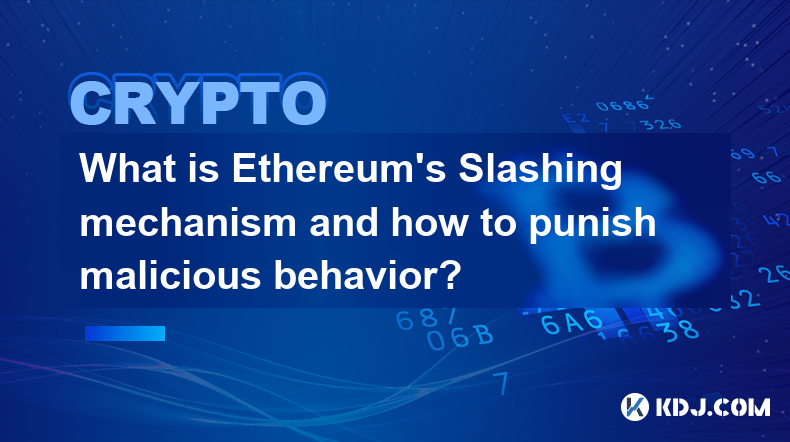-
 Bitcoin
Bitcoin $79,711.4041
-3.14% -
 Ethereum
Ethereum $1,538.5066
-5.60% -
 Tether USDt
Tether USDt $0.9992
-0.05% -
 XRP
XRP $1.9841
-1.63% -
 BNB
BNB $578.1462
0.23% -
 USDC
USDC $1.0000
0.01% -
 Solana
Solana $113.3900
-2.89% -
 Dogecoin
Dogecoin $0.1553
-1.34% -
 TRON
TRON $0.2355
-1.37% -
 Cardano
Cardano $0.6168
-0.36% -
 UNUS SED LEO
UNUS SED LEO $9.4115
0.23% -
 Chainlink
Chainlink $12.2586
-1.13% -
 Avalanche
Avalanche $18.4989
1.74% -
 Toncoin
Toncoin $2.9411
-5.24% -
 Stellar
Stellar $0.2323
-1.94% -
 Hedera
Hedera $0.1694
0.41% -
 Shiba Inu
Shiba Inu $0.0...01175
-0.30% -
 Sui
Sui $2.1221
-2.88% -
 MANTRA
MANTRA $6.4450
-4.88% -
 Bitcoin Cash
Bitcoin Cash $293.7100
-2.93% -
 Litecoin
Litecoin $74.7327
-0.77% -
 Polkadot
Polkadot $3.4981
-2.33% -
 Dai
Dai $0.9997
-0.03% -
 Bitget Token
Bitget Token $4.1986
-2.67% -
 Ethena USDe
Ethena USDe $0.9985
-0.04% -
 Hyperliquid
Hyperliquid $14.1454
4.74% -
 Pi
Pi $0.5960
0.47% -
 Monero
Monero $200.4963
-0.82% -
 OKB
OKB $54.0669
1.28% -
 Uniswap
Uniswap $5.0725
-4.19%
Popular science: What kind of currency is DOT? How to get DOT coins?
Polkadot's (DOT) unique consensus mechanism, Nominated Proof of Stake (NPoS), enables DOT holders to participate in network governance and earn rewards through staking and validation.
Oct 14, 2024 at 11:41 pm

1. What is DOT?
Polkadot (DOT) is a platform that connects multiple blockchains, allowing them to share data and transactions securely. It is often referred to as a "blockchain of blockchains" or a "meta blockchain."
2. DOT's Role in the Polkadot Network
DOT serves as the native token within the Polkadot ecosystem. It is used for several crucial functions, including:
- Staking: DOT holders can stake their tokens to secure the network and validate transactions.
- Governance: DOT holders participate in governance decisions, such as voting on protocol upgrades and treasury proposals.
- Fees: DOT is used to pay transaction fees on the Polkadot network.
- Bonding: Nominators must bond DOT to participate in the network's consensus mechanism.
3. How to Get DOT Coins
There are several ways to obtain DOT coins:
- Exchanges: DOT is available for purchase on cryptocurrency exchanges, such as Binance, Coinbase, and Kraken.
- Wallets: Some cryptocurrency wallets, such as Exodus and Trust Wallet, offer DOT storage and exchange services.
- Staking: Individuals can stake their DOT coins through exchanges or dedicated staking providers to earn rewards.
- Mining: DOT is not mined in the traditional sense. Instead, it is distributed to those who participate in the network's consensus mechanism (see below).
4. The Consensus Mechanism on Polkadot
Polkadot uses a unique consensus mechanism called "Nominated Proof of Stake (NPoS)." Here's how it works:
- Nominators: DOT holders nominate validators to participate in the consensus process.
- Validators: Selected validators create new blocks and add them to the blockchain.
- Collators: Collators collect transactions from across the Polkadot network and forward them to validators for inclusion in new blocks.
- Finalizers: Finalizers ensure that approved blocks are added to the finalized chain.
5. Advantages of Polkadot
Polkadot offers several advantages over traditional blockchain platforms:
- Interoperability: It provides a bridge between different blockchains, allowing them to communicate and share data.
- Scalability: The network is designed to handle a high volume of transactions, making it suitable for large-scale applications.
- Security: DOT's staking mechanism and NPoS consensus provide robust security against malicious attacks.
- Governance: DOT holders have a say in the network's direction and can vote on important decisions.
Disclaimer:info@kdj.com
The information provided is not trading advice. kdj.com does not assume any responsibility for any investments made based on the information provided in this article. Cryptocurrencies are highly volatile and it is highly recommended that you invest with caution after thorough research!
If you believe that the content used on this website infringes your copyright, please contact us immediately (info@kdj.com) and we will delete it promptly.
- 4 Cryptos Making Headlines: Bitcoin (BTC), Ripple (XRP), BlockDAG (BDAG), and Binance Coin (BNB)
- 2025-04-11 10:05:13
- Tron Price Aims for $0.30 and Kaspa Falls 17% While 500K+ Miners Trust BlockDAG’s X1 App
- 2025-04-11 10:05:13
- XRP Poised for a Major Rally as SEC Lawsuit Ends, ETF Approvals Loom, and Technical Indicators Signal a Bullish Breakout
- 2025-04-11 10:00:12
- The Pi Network price today shows continued weakness
- 2025-04-11 10:00:12
- BlockDAG (BDAG), Litecoin (LTC), Filecoin (FIL), and Tron (TRX) Are Some of the Best Crypto Projects for 2025
- 2025-04-11 09:55:12
- Bitcoin [BTC] Topped $88K After Trump's 'Less Severe' Tariff Plans
- 2025-04-11 09:55:12
Related knowledge

What is Ethereum’s Slashing mechanism and how to punish malicious behavior?
Feb 20,2025 at 03:08am
Key PointsOverview of slashingDifferent types of slashing in EthereumIncentives and consequences of slashingIdentifying and reporting slashed validatorsOngoing discussions and potential improvementsEthereum's Slashing Mechanism: Punishing Malicious BehaviorEthereum's slashing mechanism is an essential tool for ensuring network security and punishing mal...

What is the verifier node of Ethereum and how to become a verifier?
Feb 19,2025 at 06:00pm
The Verifier Node of Ethereum: A Comprehensive GuideKey Points:What is a Verifier Node?How to Become a Verifier NodeResponsibilities and Rewards of a Verifier NodeMinimum Requirements for Becoming a Verifier NodePotential Difficulties in Running a Verifier Node1. What is a Verifier Node?A Verifier Node is an independent entity on the Ethereum network th...

What is Ethereum’s staking, and how to participate and earn money?
Feb 19,2025 at 04:37pm
Key Points:Understanding Ethereum's Staking MechanismSteps to Participate in StakingBenefits and Rewards of StakingSecurity and Risk ConsiderationsTechnical Requirements and Hardware OptionsPotential Challenges and Troubleshooting TipsFAQs on Ethereum StakingWhat is Ethereum's Staking?Proof-of-Stake (PoS) is a consensus mechanism used in blockchain netw...

What is Ethereum’s DAO (Decentralized Autonomous Organization) and how does it work?
Feb 20,2025 at 03:12am
Key PointsDefinition and Structure of a DAOGovernance and Decision-Making in DAOsBenefits and Use Cases of DAOsChallenges and Limitations of DAOsWhat is Ethereum's DAO (Decentralized Autonomous Organization) and How Does It Work?Definition and Structure of a DAOA Decentralized Autonomous Organization (DAO) is an innovative governance and management fram...

What is Ethereum's multi-signature wallet and how to improve security?
Feb 20,2025 at 02:18pm
Key Points:Understanding the Concept of a Multi-Signature WalletBenefits and Drawbacks of Multisig WalletsRequirements for Setting Up a Multisig WalletStep-by-Step Guide to Generating a Multisig WalletImplementing Strategies for Enhanced Security1. Understanding the Concept of a Multi-Signature WalletA multi-signature (multisig) wallet in the Ethereum e...

What is Ethereum's oracle and how to provide data for smart contracts?
Feb 21,2025 at 01:30am
Key Points:Understanding the concept of oracles in EthereumExploring different types of oraclesDetailed guide on how to provide data for smart contractsAddressing potential challenges and considerationsWhat is Ethereum's Oracle?Oracles are crucial components in the Ethereum ecosystem, enabling smart contracts to access real-world data and off-chain even...

What is Ethereum’s Slashing mechanism and how to punish malicious behavior?
Feb 20,2025 at 03:08am
Key PointsOverview of slashingDifferent types of slashing in EthereumIncentives and consequences of slashingIdentifying and reporting slashed validatorsOngoing discussions and potential improvementsEthereum's Slashing Mechanism: Punishing Malicious BehaviorEthereum's slashing mechanism is an essential tool for ensuring network security and punishing mal...

What is the verifier node of Ethereum and how to become a verifier?
Feb 19,2025 at 06:00pm
The Verifier Node of Ethereum: A Comprehensive GuideKey Points:What is a Verifier Node?How to Become a Verifier NodeResponsibilities and Rewards of a Verifier NodeMinimum Requirements for Becoming a Verifier NodePotential Difficulties in Running a Verifier Node1. What is a Verifier Node?A Verifier Node is an independent entity on the Ethereum network th...

What is Ethereum’s staking, and how to participate and earn money?
Feb 19,2025 at 04:37pm
Key Points:Understanding Ethereum's Staking MechanismSteps to Participate in StakingBenefits and Rewards of StakingSecurity and Risk ConsiderationsTechnical Requirements and Hardware OptionsPotential Challenges and Troubleshooting TipsFAQs on Ethereum StakingWhat is Ethereum's Staking?Proof-of-Stake (PoS) is a consensus mechanism used in blockchain netw...

What is Ethereum’s DAO (Decentralized Autonomous Organization) and how does it work?
Feb 20,2025 at 03:12am
Key PointsDefinition and Structure of a DAOGovernance and Decision-Making in DAOsBenefits and Use Cases of DAOsChallenges and Limitations of DAOsWhat is Ethereum's DAO (Decentralized Autonomous Organization) and How Does It Work?Definition and Structure of a DAOA Decentralized Autonomous Organization (DAO) is an innovative governance and management fram...

What is Ethereum's multi-signature wallet and how to improve security?
Feb 20,2025 at 02:18pm
Key Points:Understanding the Concept of a Multi-Signature WalletBenefits and Drawbacks of Multisig WalletsRequirements for Setting Up a Multisig WalletStep-by-Step Guide to Generating a Multisig WalletImplementing Strategies for Enhanced Security1. Understanding the Concept of a Multi-Signature WalletA multi-signature (multisig) wallet in the Ethereum e...

What is Ethereum's oracle and how to provide data for smart contracts?
Feb 21,2025 at 01:30am
Key Points:Understanding the concept of oracles in EthereumExploring different types of oraclesDetailed guide on how to provide data for smart contractsAddressing potential challenges and considerationsWhat is Ethereum's Oracle?Oracles are crucial components in the Ethereum ecosystem, enabling smart contracts to access real-world data and off-chain even...
See all articles




















![🐢Super Mario World Koopa Troopa 100% 96⭐️ + Coin [Ao Vivo] 🐢Super Mario World Koopa Troopa 100% 96⭐️ + Coin [Ao Vivo]](/uploads/2025/04/10/cryptocurrencies-news/videos/super-mario-koopa-troopa-coin-ao-vivo/image-1.webp)


































































